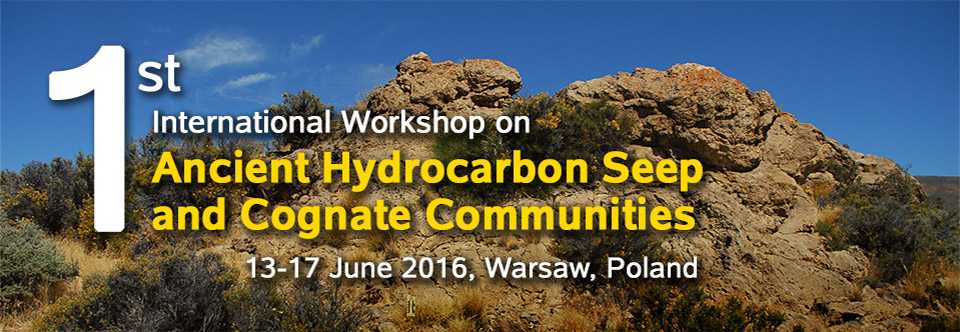
VERY SIMILAR, BUT VERY DIFFERENT: ECOLOGY OF PALAEOZOIC HYDROCARBON SEEP COMMUNITIES
Michał JAKUBOWICZ1
1Institute of Geoecology and Geoinformation, Adam Mickiewicz University, Poznań, Poland
Corresponding author: mjakub@amu.edu.pl
Numerous challenges await those attempting to study the ecology of Palaeozoic chemosynthesis-based communities. Not only is the fossil record of Palaeozoic seeps and vents the most fragmentary among the Phanerozoic history of the chemosynthesis-based assemblages. It also contains biota that can be considered unusual even as for these peculiar ecosystems, and many of them have no or unclear affinities to modern vent and seep lineages. Applying a strictly actualistic approach in such studies may be questionable, as is the representativeness of the few known Palaeozoic hydrocarbon seep associations for the general ecology of the Palaeozoic chemosynthesis-based ecosystems. Of modern seep and vent invertebrates, solemyid and mytilid bivalves, siboglinid tube worms, and monoplacophorans were considered by different authors to have had representatives in Palaeozoic chemosynthetic communities. Some of these have been proven to actually represent lineages with no modern descendants, but others do seem to represent relatives of contemporary chemosymbiotic animals. Still, many of the Palaeozoic seep and vent ecosystems were inhabited by groups unknown from modern fluid emissions, with arguably the best documented example of rich, nearly monospecific assemblages of dimerelloid brachiopods. Recent evidence indicates that the evolutionary history of bivalves in seep-related environments can be at least as ancient as that of the brachiopods, with modiomorphids and solemyids reported from a hydrocarbon seep as old as the Middle Devonian. Whether these seep-related metazoans hosted chemosymbionts remains uncertain. While such a scenario appears feasible for some large Palaeozoic bivalves, many other Palaeozoic seep and vent inhabitants, such as some brachiopods and amplexoid rugose corals, seem to have represented opportunistic, rather than seep- or vent-obligate strategies. The question of whether the chemosynthesis-based metazoan communities came from seeps to vents, or the other way around remains a matter of contention, with apparently disparate answers suggested by modern genetic studies and the Palaeozoic fossil record. The oldest proposed seep was reported from the Silurian; its interpretation as a fossil seep has, however, been questioned. The remaining examples of the Palaeozoic, macroinvertebrate-rich hydrocarbon seep ecosystems are of Middle Devonian to Lower Carboniferous age, with the paucity of the fossil record obscuring both the development of the oldest seep-related metazoan communities, as well as their transition into the “modern-type” chemosynthetic assemblages.
